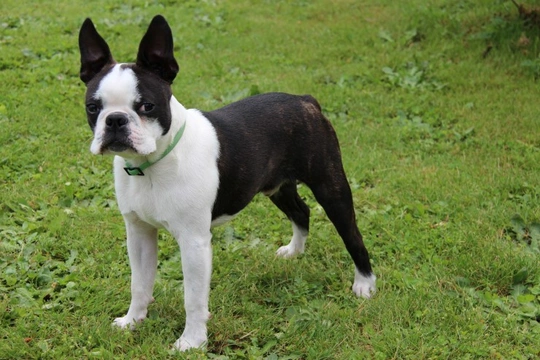
Hereditary Cataracts (HC-HSF4) testing for dogs
Cataracts are a relatively common eye condition that causes the lens of the eye to become opaque and cloudy, which leads to an associated loss of vision that can result in total blindness. The condition is of course well known to pose a significant threat to the sight of people if left untreated, particularly in developing countries where access to medical care is not always available, but dogs can suffer from cataracts too, and in this article we will talk about a specific type of hereditary cataracts (HC-HSF4) that can affect dogs.
If a dog suffers from hereditary cataracts or is a carrier of the gene mutation that leads to them, they run the risk of passing the condition on to their offspring. For this reason, The Kennel Club in association with the British Veterinary Association, runs a testing scheme for dogs that are considered to be at risk of hereditary cataracts and that may be used for breeding.
In this article, we will look at HC-HSF4 hereditary cataracts in dogs in more detail, including what sort of dogs can be affected by them, and how you can get your own dog tested. Read on to learn more.
More about hereditary cataracts
There are various different types of hereditary cataracts that can affect dogs, each caused by different types of mutated genes. In this article we will be looking at the HC-HSF4 type, which stands for hereditary cataracts of the HSF4 gene mutation type.
The HSF4 gene mutation itself can be further broken down into different sub-types, each of which tend to be prevalent across different respective breeds of dog.
However, both types of hereditary cataracts share a lot of common factors, including the start of noticeable cataract development in affected dogs between the ages of around 9-15 months, which further grow and develop up until the dog reaches the age of around four. Left untreated, the condition will lead to total blindness in the affected eyes.
It is important to note that not all types of cataracts that can affect dogs are hereditary-some forms of cataracts can be caused as a secondary complication of other eye problems such as glaucoma, and when the cataracts are hereditary, different types have different chances of affecting both eyes together, or just one.
What sort of dogs are most likely to be affected by HC-HSF4 cataracts?
A reasonably wide range of different dog breeds may suffer from hereditary cataracts, and the HSF4 variant itself has been found at a potentially concerning rate of prevalence in several dog breeds.
The Boston terrier, French bulldog, Staffordshire bull terrier and Australian shepherd are four of the main breeds, and if your dog is of a different breed, you can find out if they too may be affected by using The Kennel Club’s breed health data search tool.
How does the heredity of the condition work?
The type of HC HSF4 that affects most breeds is caused by an autosomal recessive gene mutation, which means that the chances of any given dog inheriting it through their breed line depends on them inheriting a certain combination of the gene mutation necessary to cause the condition.
If neither of the parent dogs have the condition and are not carriers for it, their puppies will be unaffected, while if both parents carry the gene for the condition, their offspring will too.
It can get more complicated when pups inherit one mutated gene from a parent but not the other, and different combinations of clear and carrier, clear and affected or affected and clear will lead to different percentages of the presentation or absence of the condition in their offspring.
However, the type of HC-HSF4 that can affect the Australian shepherd is slightly different, and appears to be an autosomal dominant condition, which means that only one of the two parent dogs needs to pass the gene onto their young for them to potentially be affected by it.
Because it is not always obvious if any given dog is carrying the condition or affected by it, it is important that dogs from the breeds that are known to be affected particularly by the condition be tested for it before being used for breeding, so that the breeder can make an informed decision on the viability of breeding any given match.
How can you get your dog tested for hereditary cataracts?
To test for the markers of HC HSF4 in the at-risk breeds, you will simply need to ask your vet to take a DNA sample from your dog, and then send it off to one of the approved laboratories that can test the sample for you, and return the results. For a list of laboratories in the UK that can carry out the test, check out this information on The Kennel Club website.



